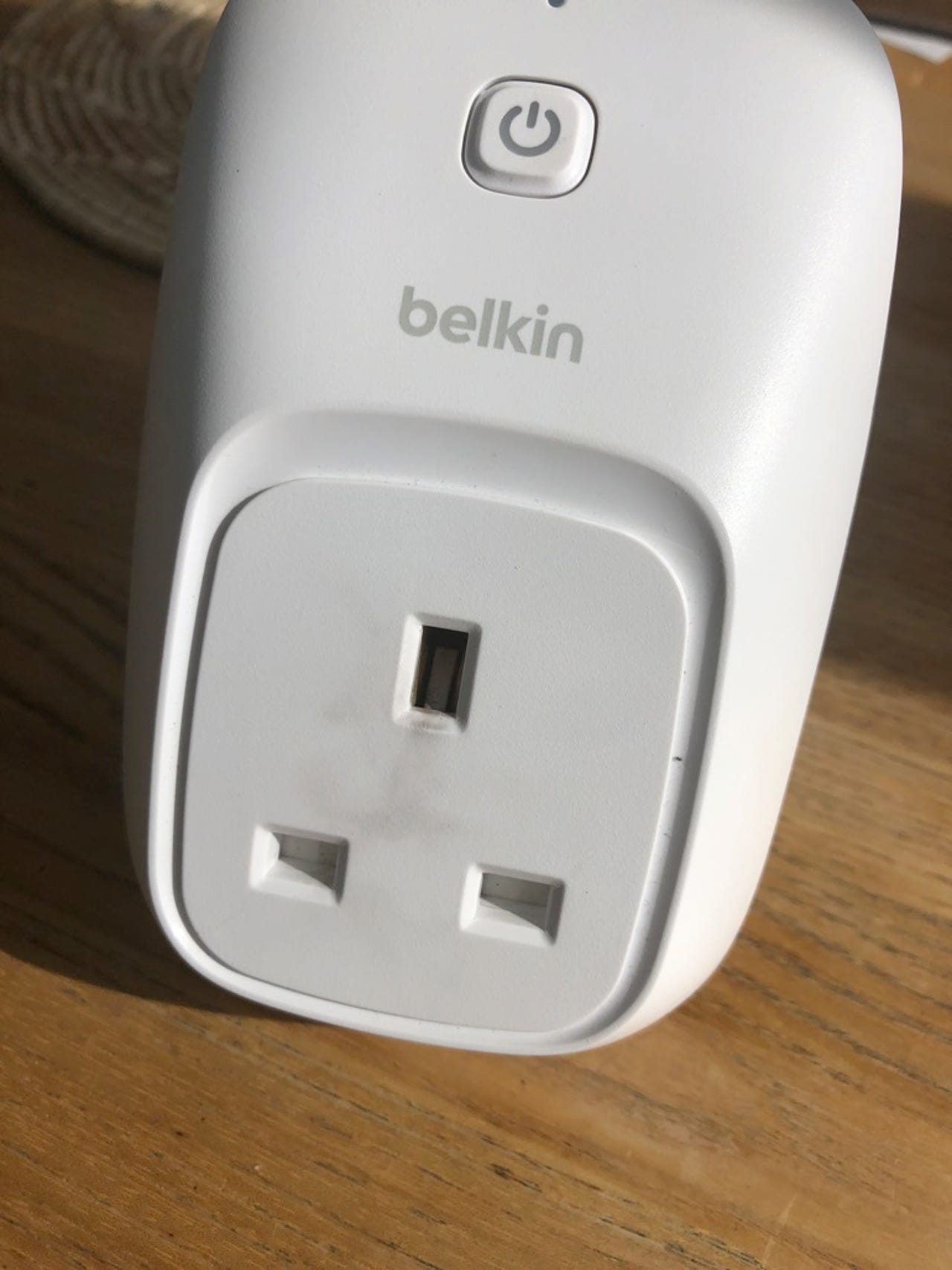When IoT/home automation devices explode


Why has this stopped working?
This landed on my healing bench the other day. It's a Belkin Wemo Wi-Fi switch (ignore the weird plug configuration, that's what they look like here in the UK).
Customer complaint: It stopped working.
Further questioning revealed that there was a bang, a flash or sparks, and a little smoke. The device plugged into the switch was undamaged.
Well there's your problem. Even from ten feet away the first thing I noticed was the black soot mark on the front of the device. The casting marks on the cover suggests it was built around January 2016.
More soot
A visual inspection is really all it needs to come to the conclusion that this was the source of the bang, flash, and smoke. The thing also had that distinctive cooked electronics small to it.
My first guess was that the relay used to switch the load side -- the part of the circuit carrying the heavy current -- had malfunctioned. I've seen that happen a few times, especially when the switch is asked to carry a heavier current than it is rated for (which wasn't the case here, the load was well within the specification of the switch), or it's a cheap switch from a no-name seller (again, not the case).
This deserved a deeper look.
Special fasteners
Ugh, they don't want me getting into this. Unless you have a special tool, you're not getting past these triangular fasteners.
The special fasteners are no match for my iFixit driver kit
The iFixit Manta driver kit makes short work of these special fasteners. I can't recommend this kit highly enough.
And we're in!
The problem seems like an assembly defect
Once inside it becomes apparent that the problem isn't a failed relay, but instead that a cable has been crushed into one of the brass power rails, and that the insulation failed causing a short circuit.
Here's another view of the pinched cable
It's clearly been pretty aggressively clamped down.
And here's the underside
It's clear that the initial pinching of the cable didn't completely break through the insulation, which is why it didn't fail right out of the box.
But over time (and heating/cooling cycles, and possible flexing of the device while in use), the insulation was slowly worn though until there was a short circuit between the hot rail and the neutral wire.
Resulting in a bang, a flash, and smoke.
What about all the others in service?
This Belkin Wemo switch was one of six in service. This raised an interesting question: did any of the other switches suffer the same assembly defect?
Not wanting to leave this to faith, I took the others apart to take a look. Fortunately, they all seem to be put together correctly, This photo shows the correct wiring layout, with none of them being pinched or clamped.
Moral of the story:
1: This device had been safety tested during the past 12 months and had passed. The defect would have been spotted if I'd taken the device apart, but that sort of thing voids warranties.
2: Manufacturing and assembly defects can remain hidden for a long time.
2: A full-on hot/neutral short circuit is no doubt "exciting," but the device contained this small explosion well.
4: The more devices you have plugged into your electrical system, the greateer your chances of having problems.